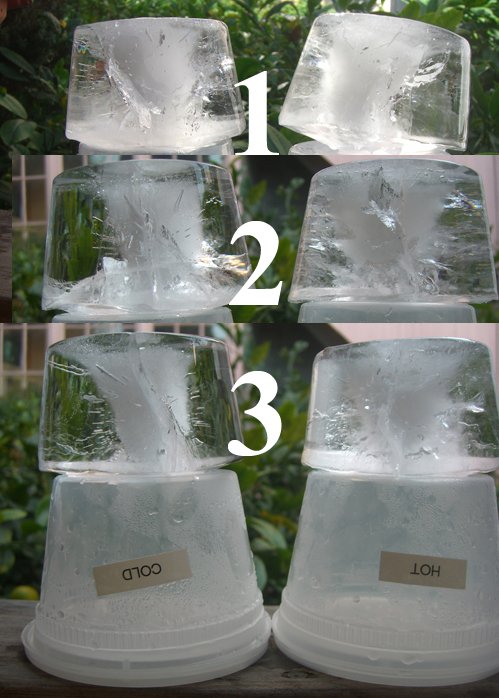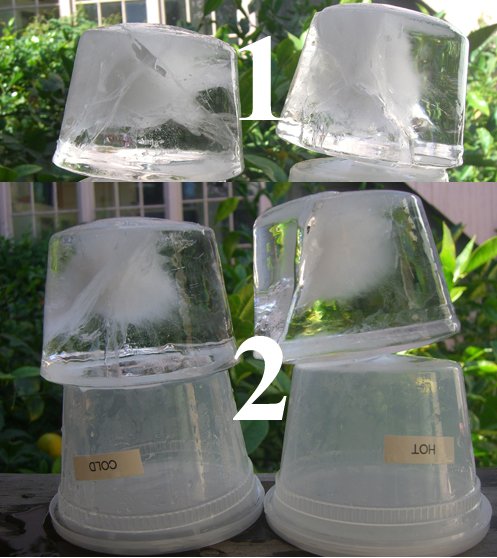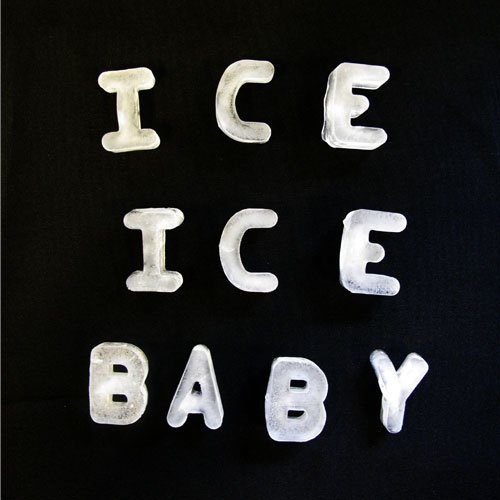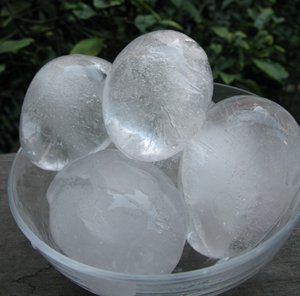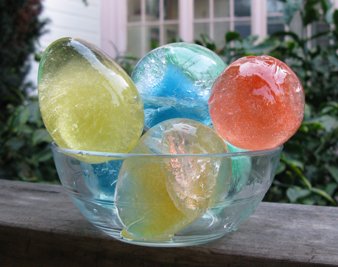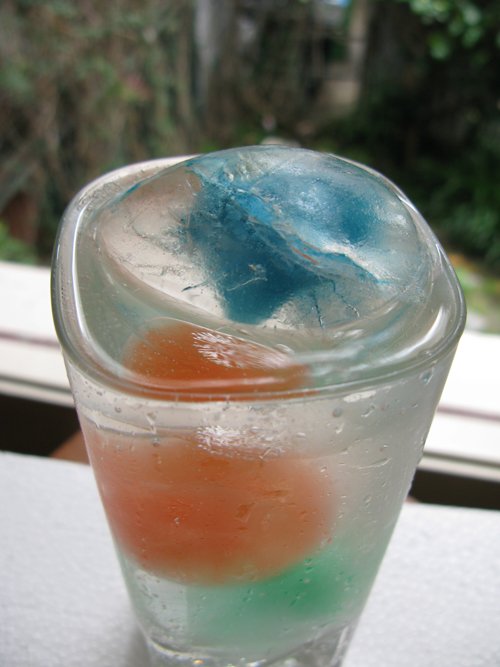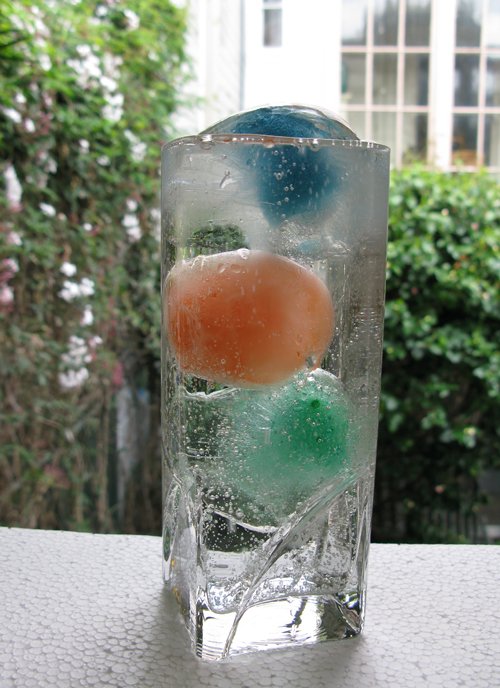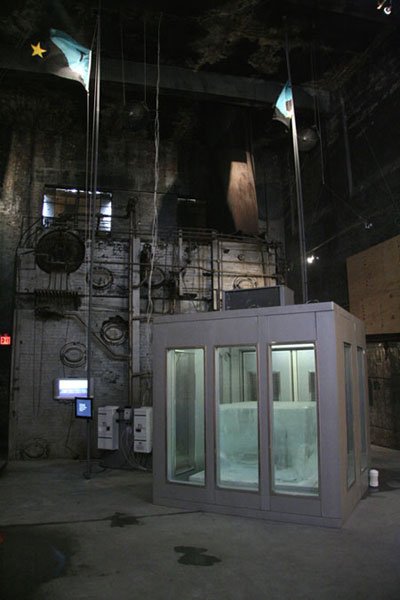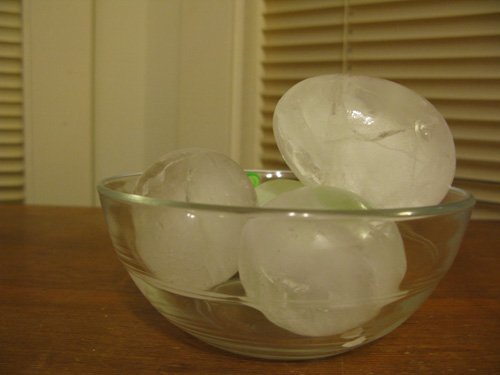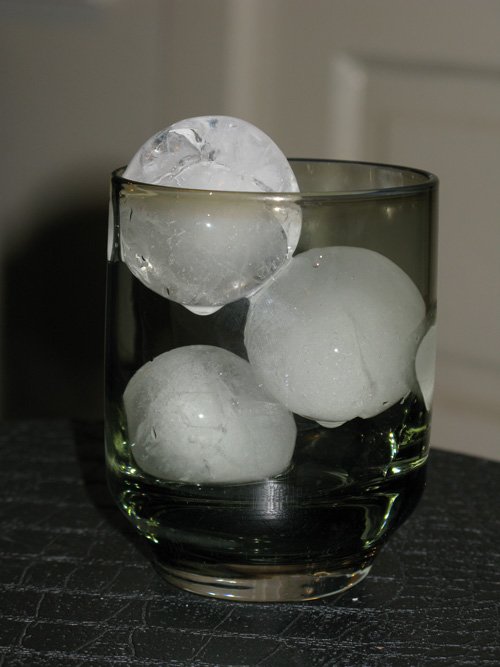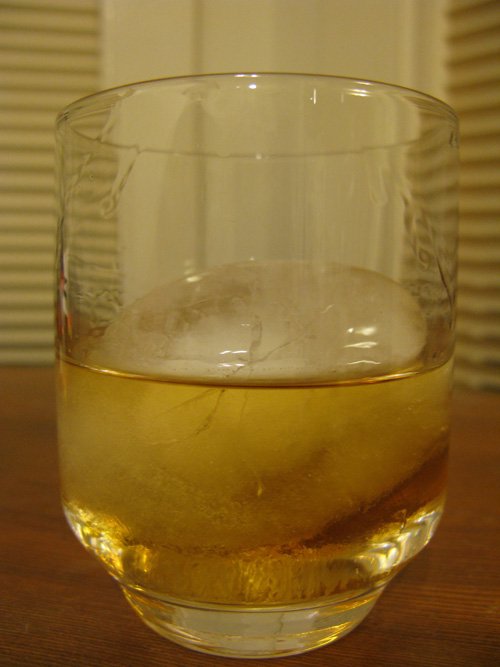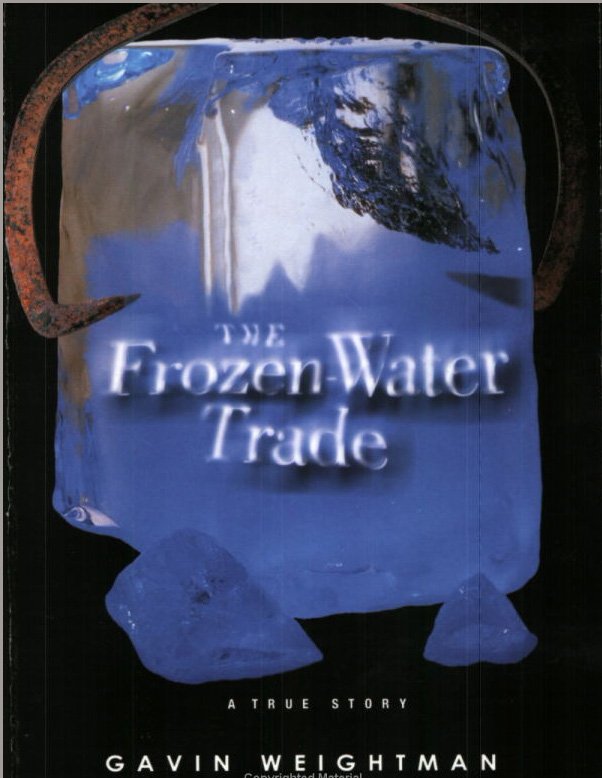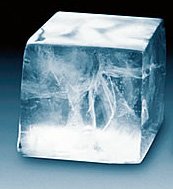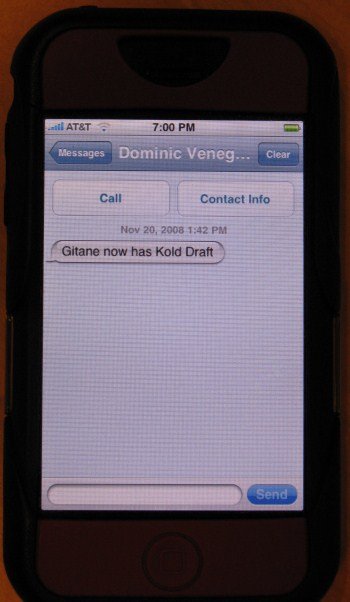I have been doing experiments at home to try to get the clearest ice possible. So far my experiments have compared:
I have not yet had success. Will the third time be the charm?
(*Update – You might want to skip to this index page to see conclusions reached after many experiments.)
This time I compared hot water to cold water to see which would freeze more clearly. The theory is that hot/boiled water has less trapped oxygen in it, and thus will freeze clearly because there will be less air bubbles.
As I previously saw no significant difference in ice clarity between using tap vs. distilled water, I began with unfiltered tap water. One batch of water I left at room temperature. The other batch I boiled for several minutes. I put them in the freezer while the hot water was still hot. Here is what happened on three separate attempts:
The cold water actually looks a little more clear, but this could be because when the center of the hot water finally froze, it burst. I can't guess why this is because it's not like I have a super refrigerator that freezes ice in ten minutes.
Another theory about why the first experiment failed is that as the hot water cools down in the freezer, it reabsorbs oxygen and acts just like cold water. To test this, I repeated the experiment, this time covering both plastic tubs with the lid before freezing.
Here the hot water ice looks slightly more clear than it did when it was uncovered. However, I'm not seeing a significant difference in hot vs. cold water, though the covered hot water may be just slightly clearer.
Conclusion: Hot water does not freeze significantly clearer than cold water, even when the vessel is covered to reduce oxygen re-absorption.
In all of these ice experiments so far, the major cloudy factor in the ice has not been cloudiness throughout the ice, but a cloudy spot in the center of the ice. This spot is assumed to form due to the order in which ice freezes, from the outside-in. The oxygen migrates to the liquid part (in the middle) until it is the last part to freeze. Kold-Draft ice machines produce wonderfully clear ice cubes in part because they freeze the ice in layers- water is sprayed in layers from the top down, so that oxygen is never trapped.
Is there a way to freeze ice in a home freezer similar to a Kold Draft machine? Can we manipulate the way water freezes or change the shape of the container? Can we vibrate the container or stir the water so that the surface stays liquid and freezes last?
We shall see, in future ice experiments.
*Update – For a solution to the ice problem, see this post for a method that works. Also, an index of all of the ice experiments on Alcademics can be found here.
